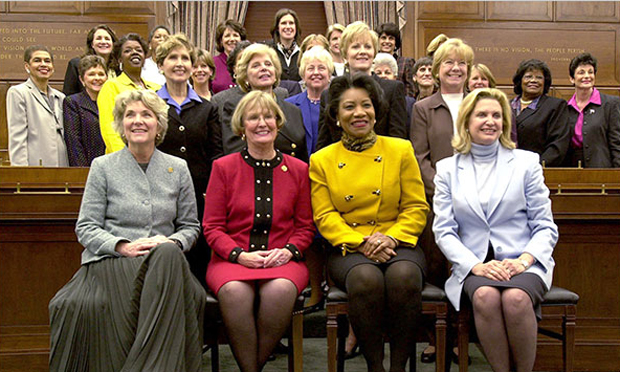Many Americans might be surprised to learn that Afghanistan has a larger percentage of women in its national legislative body than the United States does, according to an analysis from the World Bank. In 2015, 19.4 percent of our members of Congress were female compared to 28 percent of Afghanistan’s national legislators. A 2015 report from the Pew Research Center shows that the U.S. ranked 83rd of 137 countries for its share of women holding office in a national legislature in 2014.
Some scholars credit gender quotas for helping improve the representation of women in politics in various countries, including Afghanistan. Since Argentina passed a law in the 1990s aimed at advancing women’s representation, dozens of countries have taken the controversial step of adopting gender quotas — policies requiring that a certain portion of political candidates or legislators be female, according to a 2015 study published in Legislative Studies Quarterly. That study shows that the number of nations with gender quotas increased from nine in 1995 to 43 in 2010. Drude Dahlerup, a political science professor at Stockholm University in Sweden, has written about the pros and cons of electoral quotas, an affirmative action strategy that is not used in the U.S.
While quotas have been successful in ensuring more women enter their country’s legislatures, little research has been done to determine whether this type of reform helps women become elected to leadership posts within their political parties at a higher rate. On one hand, some scholars hypothesize that quotas increase the number of women in political party leadership by expanding the number of female candidates who are eligible for such posts, and also by mobilizing support for a female leader. In contrast, other scholars have hypothesized that having “quota women” could lead to “stigmatization and backlash effects” that could undermine attempts to place more women in leadership roles.
A 2016 study published in the American Political Science Review examines this issue. For the study, “Gender Quotas and Women’s Political Leadership,” Diana Z. O’Brien of Indiana University and Johanna Rickne of the Research Institute for Industrial Economics looked at 15 years of data on local leadership appointments in Sweden’s largest political party. They focused on political leadership before and after the Swedish Social Democratic Party imposed a gender quota on 290 municipal branches of the party in 1994.
The study’s key findings include:
- Having a gender quota helped women obtain party leadership positions. The quota “both immediately and permanently improved women’s access to leadership positions in municipalities where fewer women had previously held elected office.”
- Having a quota did not seem to influence women’s chances of maintaining a leadership post once they acquired it.
- Having a gender quota strengthened the pool of qualified women eligible for party leadership roles. More qualified, better educated women entered politics after the quota was implemented relative to the number of qualified men.
- The quota did not increase the diversity of women in leadership roles with respect to age, education or income. Overall, the generational, educational and income levels of women in power remained unchanged before and after the quota.
This research helps dispel the myth that legislative gender quotas have a backlash effect on women obtaining higher positions of power in their political parties, at least in Sweden. There, quotas not only increased the number of women in legislatures, but also seemed to further promote women into leadership roles in the broader political system. The authors of the study suggest that future research should build upon this study by determining whether other countries and political systems have experienced similar outcomes.
Related research: A 2015 study in Political Psychology, “Emotional, Sensitive, and Unfit for Office? Gender Stereotype Activation and Support for Female Candidates,” analyzes the likelihood that voters assign gender-related stereotypes to political candidates. A 2014 study in the Journal of Politics, “How the Gender of U.S. Senators influences People’s Understanding and Engagement in Politics,” suggests that women are more involved in politics and have more political knowledge when they are represented by women in the U.S. Senate.
Keywords: women voters, female candidate, women in politics, political participation, Voluntary Political Party Quota, quotaProject, affirmative action


Expert Commentary